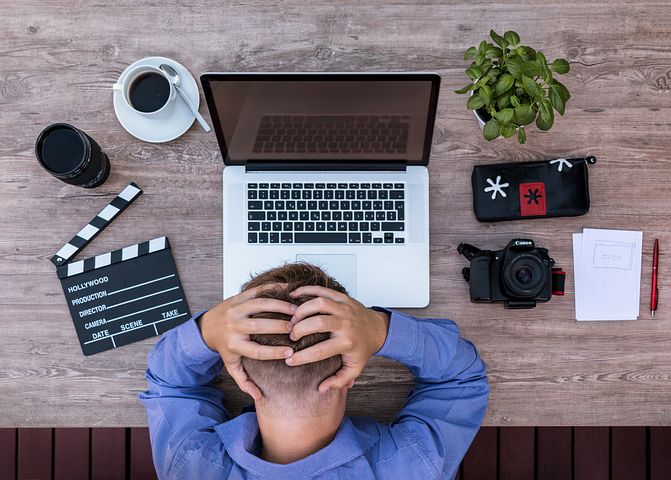How To Make a Graphic Design Portfolio: Creating an effective portfolio as a graphic designer can be challenging. You want to show off your best work, but you also want to keep your work concise so that your potential employers don’t get bogged down in unnecessary details.
Whether you’re just starting out in the industry or you’re looking to move up within it, knowing how to make an effective graphic design portfolio can help set you apart from the competition and land you the job of your dreams.
How To Make a Graphic Design Portfolio That Lands You Jobs
Here are some better ways to make your graphic design portfolio a top notch.
1. Choose your type of graphic design portfolio
A great graphic design portfolio showcases your creativity and technical skills, but it also shows that you understand the needs of your clients. When choosing what type of portfolio to create, consider what will work best for you and your work.
Here are types of portfolios that are sure to impress potential employers:
- Physical Portfolio: Create a physical presentation of your work in an 11×14 inch format on high quality paper.
- Digital: Create an online presentation showcasing all of your work in digital formats such as images, video, or animations.
- Magazines: Include examples from magazines or newspapers where you’ve been published in print form as well as digitally if possible.
Learn how to make your first graphic design by taking up Waptutors Graphic Design Course.
2. Make it easy to find your contact info
First things first, make sure your contact information is easy to find on your website or online portfolio. This may seem like a no-brainer, but you’d be surprised how many people bury their email address or phone number on their About page.
Remember that prospective employers are looking for someone who they can easily reach and will respond promptly when contacted.
Put yourself in their shoes. if they can’t find out how to get in touch with you, they’ll quickly move on to another designer who’s more responsive.

3. Include samples of your best work
When it comes to making a great first impression, your graphic design portfolio is key. After all, your portfolio is often the only way employers can get a sense of your skills and style.
And you want to make sure they know you’re worth taking the time to meet in person. But that doesn’t mean you have to work for hours on end perfecting every detail: Put yourself in their shoes and think about what information would be most helpful.
4. Include specific information about your skills
As a graphic designer, your portfolio is your best tool for landing new clients and jobs.
Here are some tips on how to make sure your portfolio is up to date:
- Include samples of projects you have worked on in the past- do not list every single project you have ever done, but only include your favorites.
- Be confident! Be proud of what you’ve accomplished so far, and don’t be afraid to show it off!
- Provide links that showcase your work if possible; this will allow potential employers to see more of what you can do at their own leisure.
5. Proofread everything before you publish
As a graphic designer, your portfolio is your calling card. It’s how you showcase your skills and demonstrate to potential employers that you’re the right person for the job.
So how do you create a portfolio that will help you land the job you want? The first step is proofreading everything before you publish it: typos can kill an otherwise good design.
If a mistake slips through, don’t just cross it out or delete it. Rewrite the sentence or paragraph in its entirety. The next step is to go back through every detail and ask yourself does this add value? Look at everything from font choice, colors, and spacing to what goes where on the page.
6. Add social media links and/or personal website links
A strong portfolio is essential for any graphic designer looking to land their dream job. But what exactly should you include in your portfolio? And how can you make sure it stands out from the rest?
If you’re not careful, a graphic design portfolio might consist of only headshots and snapshots of artwork on computer screens, which can come across as boring and unprofessional.
Here are some important questions to ask yourself before building your perfect graphic design portfolio:
- What type of projects would I like to work on in the future?
- Who am I trying to reach with my work?
- How do I want my audience to feel after viewing my designs?
- What kind of fonts, colors, or shapes would best represent me and my style?
- What does your ideal client look like (gender, age group)?
- Do they prefer bright colors or dark tones?
- Is there a certain mood they want their designs to convey?
- What color scheme do they typically use in their branding materials or website homepage background images?
Conclusion
As a graphic designer, your portfolio is your bread and butter. It’s how you market yourself to potential employers and land the jobs you want. And while it may seem like a daunting task, putting together a killer portfolio is easier than you think.
Waptutors has launched a Graphics Designing course where you trained to become a professional graphics designer. Enroll today, the course is very affordable.
We have come to an end of some free tips to make a graphic design portfolio a top notch. Following these tips will help land a job without many promotions.
Did you enjoy this article? Have you gained some knowledge? Get more awesome articles like this by subscribing to Waptutors below. Thanks for reading.


Leave a Reply